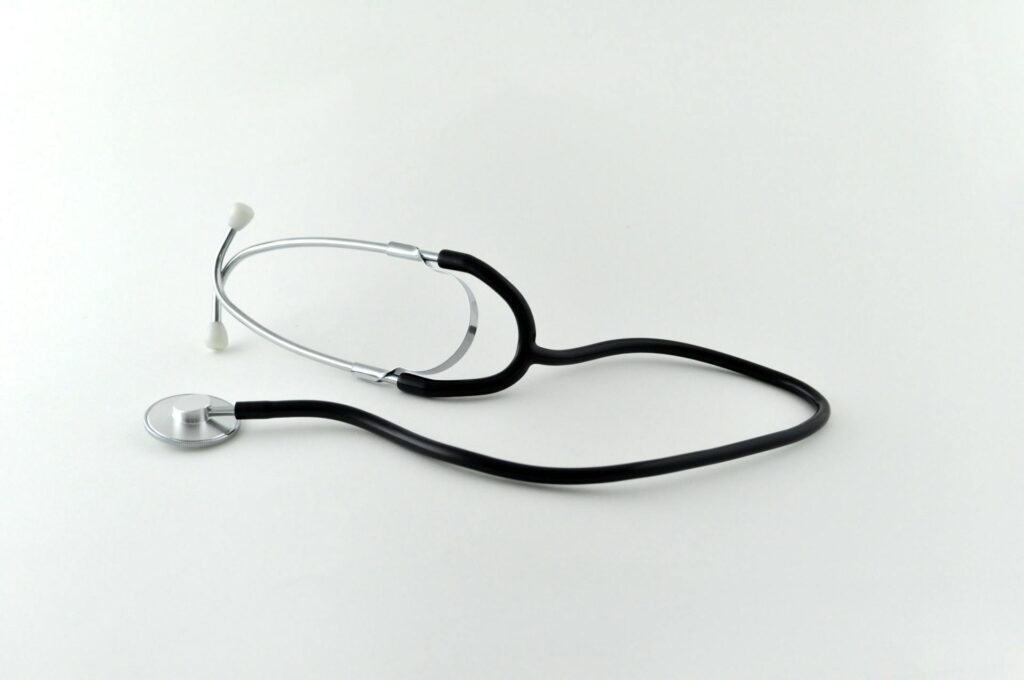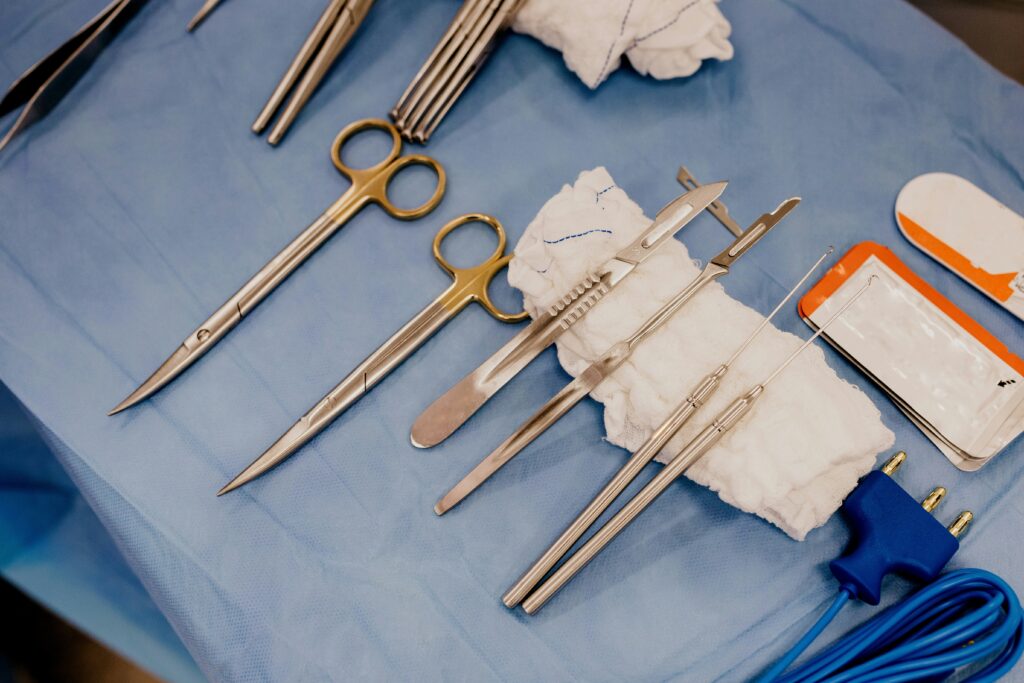Learn More About Vasectomies in General

Vasectomy is a method of permanent contraception for men. This gentle procedure usually takes 20 minutes or less and is performed in a doctor’s office or clinic. The objective is to prevent sperm from entering the semen, and this is done by blocking the tubes that carry sperm from the testicles.
The traditional technique is to make an incision on each side of the scrotum, to pull the tubes up through these incisions, and to cut the tubes. With the modern no-scalpel technique, the physician makes a single small puncture in the front of the scrotum and gently draws the vas tubes through the small puncture. Using the no-scalpel method, there is much less chance of complications and the patient usually feels much more comfortable.
Vasectomy Procedure
The actual procedure of the vasectomy has three parts – anesthesia, accessing the tubes, and blocking the tubes.
Anesthesia
Vasectomy is a very quick and gentle procedure, and the anesthesia can be done in one of two ways. Some clinics use a tiny needle to numb the skin and vas tubes, and other clinics use a spray applicator called a Madajet. Dr. Shan uses the no-needle spray applicator. The Madajet uses a puff of air to propel the anesthetic into the skin and vas tubes, and most men find the spray to be surprisingly gentle.
Accessing the Tubes
During the traditional vasectomy, the physician would use a scalpel to make an incision on both sides of the scrotum, and the vas tubes would be pulled through these incisions. These incisions are later closed with sutures, which remain in place for about 5 days until they dissolve or are removed. During the modern no-scalpel vasectomy (NSV), special delicate instruments are used to perform the procedure through a single tiny opening on the front side of the scrotum. The tiny puncture usually seals within days, so no stitches are needed. Dr. Shan uses the no-scalpel technique to access the vas tubes through a single tiny opening and most men are surprised at how gentle this technique is.

Blocking the Tubes
After accessing the vas tubes, Dr. Shan does three steps to provide the most effective vasectomy. She snips the tubes to separate the ends. Then she cauterizes the upper end of each vas to block sperm from “swimming up and out.” Then she further blocks the passage of sperm by clipping or tying a sleeve of connective tissue (called “perivasal fascia”) over the upper end of the tubes to give you even more protection. This “triple protection” technique gives you the best chance of a successful vasectomy.
What do you do before your vasectomy?
The most important thing to do before your vasectomy is to be certain that you are ready for permanent contraception. Though you may hear about vasectomy reversals, the reversal procedure is not always successful. Before your vasectomy, you must be certain that you do not want to have children in the future.
How do you prepare for a vasectomy?
Avoid aspirin and any other “blood-thinning” medications for a week before your procedure. Of course, if you take aspirin or an anticoagulant for treatment after a heart attack, stroke, or another serious medical issue, discuss this with your primary care physician first.
Shave the scrotum and base of the penis the day before your vasectomy. Having a “hair-free zone” makes the procedure much easier for the doctor.
Take a regular shower with soap on the morning of your procedure. Get a good lather going and rinse well. You don’t need to buy any special soap; normal bath soap is excellent.
Wear clean snug underwear to your appointment. Also wear your scrotal support. This can be purchased on amazon.
Many men ask if they will be OK to drive after a vasectomy. In general, it is wise to bring a driver. Vasectomy is a very gentle procedure, but there are men who tend to get lightheaded in the context of medical procedures. We encourage you to be safe. Many men, though, have never been lightheaded and know they are just fine after procedures.
During your vasectomy
The surprise that most men get during a no-scalpel vasectomy is that the procedure is much more gentle than they expect. You will get to review the procedure with the physician, ask any questions you may have, and then have the procedure.
Procedures run somewhere between ten minutes and thirty minutes, depending on your particular body shape, previous conditions, etc. In the procedure room, you will let your pants and underwear fall down to your knees. Then we will cover your “private parts” with a surgical drape. We also use a special antiseptic solution, so please let us know if you have any allergies to any skin-cleaning products. The doctor will do an examination of the scrotum and tubes and then give you a local anesthetic using a special “hypospray.” After the local anesthetic is placed, you shouldn’t feel any pain at all. There is no need to rush the procedure. During the procedure itself, the physician will access the vas tubes through a tiny opening in the skin, then cauterize and cut the tubes. For extra security, the tubes are also tied or clipped apart to prevent them from accidentally rejoining in the future. After the procedure, the tiny orifice in the skin is so small that in the majority of cases, you won’t even need a bandaid. Most men are pleasantly surprised by the whole process and say they would recommend the procedure to their friends.

After Your Vasectomy
You will be given a set of detailed instructions after your vasectomy. The information below is to give you a general idea of the process.
After your vasectomy, the small puncture will be covered by a sterile gauze and you will snug up your athletic support (also known as “the jock strap”). You should plan to rest in a comfortable chair or couch for the rest of the day and restrain your activities to minimal movements. Most men have no complications at all, but definitely the more you move around on the first day, the more you will feel. Most men don’t use ice or frozen peas, but if you choose, a few bags of frozen peas can be helpful for comfort. You can apply these for about 5 to 10 minutes every hour.
The next day, you can take a shower and start to take walks. You should take the gauze pad off in the shower and replace it with a new sterile gauze pad when you are dry. Continuing to wear the athletic supporter over the gauze is helpful for most men.
Most patients can resume gentle work during the next few days. If you do heavy physical labor, however, you will do better if you take it easy for the next five days. Since you should avoid heavy or strenuous activity for the five days afterwards, you will need to make prior arrangements for light duties only with your employer.
You can resume sexual activities in a couple of days, and in general it is good to “take it easy” after that for the first week.
After your vasectomy, you will be given a follow-up sheet with discharge instructions and the physician’s follow-up phone number. Call the number listed on your sheet for any questions regarding post-vasectomy care.
One of the most important parts of post-vasectomy care is the post-vasectomy semen check. Vasectomy is a highly-effective method of birth control, but a small channel in the healing tissue can reconnect the tubes in about one case per thousand. Usually, this is no problem; you would just have the vasectomy repeated to snip the tubes again. The problem would be if your tubes reconnected and you didn’t know it. So, make sure you follow your discharge instructions and bring a semen sample to the directed location for analysis. You should continue to consider yourself as “fertile” (i.e. able to father children) until you get the “non-fertile” results back from your semen analysis.
After a vasectomy, most men feel no difference in sex or any of the activities of life. Men usually notice:
- No change in the semen
- No change in sex drive
- No change in climax sensation
- No change in the testes or scrotum
- No change in erections
Have another question about vasectomies? Contact one of our team.